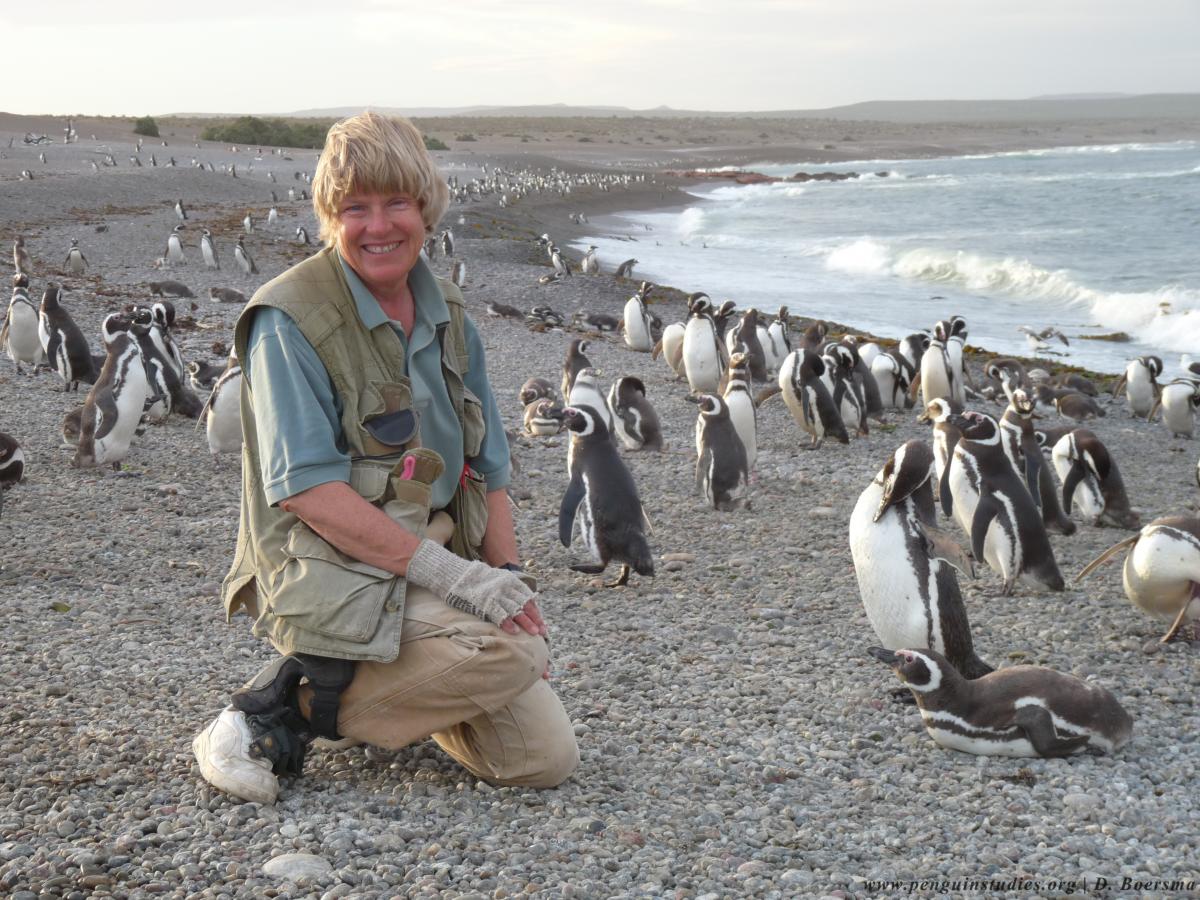
Photo courtesy of the Center for Penguins as Ocean Sentinels
A tourist, a camera and a good eye may just be the trick to saving the endangered Galapagos penguins.
Tourists and the photographs they take can provide valuable information about the health of the Galapagos penguins and their surrounding environment. From a single shot, UW researchers can determine whether a penguin is breeding, molting or migrating, as well as the bird's age, health status and other information.
"It’s really expensive to go to the Galapagos, let alone where the penguins are," said Dr. Dee Boersma, one of the project's lead investigators. "Tourist boats go there every week, so we rely on their assistance to help us learn more about the penguins. We’re just trying to make the world an easier place for penguins to survive."
Boersma has dedicated her life to preserving the penguin population. So much that she started the UW's Center for Penguins as Ocean Sentinels to help protect their environment and inspire others to take action in sustaining our natural world along the way. Her work has gained national attention - this August, she was nominated for the 2016 Indianapolis Prize, the top award for animal conservation, in recognition for her penguin work.
Currently, Boersma focuses on preserving the Galapagos and Magellenic penguins. In addition to work in the field, undergraduate and graduate students are busy analyzing a wealth of data in the Center's lab on campus. Projects range from creating maps to pinpoint the penguins' migration patterns and time traveled, to writing research papers on how to build a marine protected area.
Boersma and her lab understand the necessity of taking steps to make their everyday work as environmentally friendly as possible whether they're in the field studying penguins or at their lab on campus analyzing data. The Penguin Sentinels lab in Kincaid Hall is certified Gold by the UW's Green Laboratory Certification Program. The lab focuses on finding trends from collected data, organizing research trips, or brainstorming ways of limiting negative human impact on penguins' habitats.
"Humans are putting increased pressure on penguins and most other wildlife on this planet,” said Boersma. "The Galapagos penguins have never gotten back to the numbers they once were in the 1970s. We counted over 2,000 then. Now, there are less than 1,000."
A main reason is overfishing. Penguins rely on forage fish (squid, anchovies, and crustaceans), and unfortunately, so do marine fisheries. Forage fish produce a sizable share of the global wild marine fish catch. Boersma says at least one third of forage fish should be left for penguins and other marine mammals to eat, but many end up being processed as food for chickens, pets, and fish farms.
"Is it worth it to suck those fish out to feed salmon, pigs, or chickens?" said Boersma. "I don’t think so. Penguins are really interesting and enrich our lives. We have to start looking at how we can balance and preserve our resources more effectively."
In an effort to stop overfishing, Boersma and her lab are trying to create a marine protected area in the Galapagos Islands, which will help the area penguin population. The more food there is, the more likely it is for the penguins to breed. Almost all species of penguins drop their feathers once a year, except the Galapagos who molt twice in a year. To prepare for molting, penguins can gain about a third of their body weight, sometimes even half. Then that added body weight is used as energy to grow new feathers.
After the molting process is complete, the penguins try to breed. Most females will lay two eggs, but if there’s no food the birds will desert their nest in an effort to keep themselves alive.
To help with the breeding process, Boersma led an effort to build artificial nests for the penguins to use and she travels to the Galapagos Islands twice a year to see if the penguins are using them for breeding. So far 120 nests have been built and nine penguins have successfully bred there. When Boersma isn't able to be on location doing fieldwork, she relies on pictures to tell her what the penguins are doing.
“Having pictures is like having eyes on the ground,” Boersma said. “We can piece what the penguins are doing in different parts of the island. That’s why having eyes and ears in the area are so important for science because we can learn things that we normally wouldn't."
She added, “Overall, I think penguins are a good way to show people what’s going to happen to earth if we don’t start taking better care of it. We can continue to ignore all of these signals, but the wildlife is already telling us.”